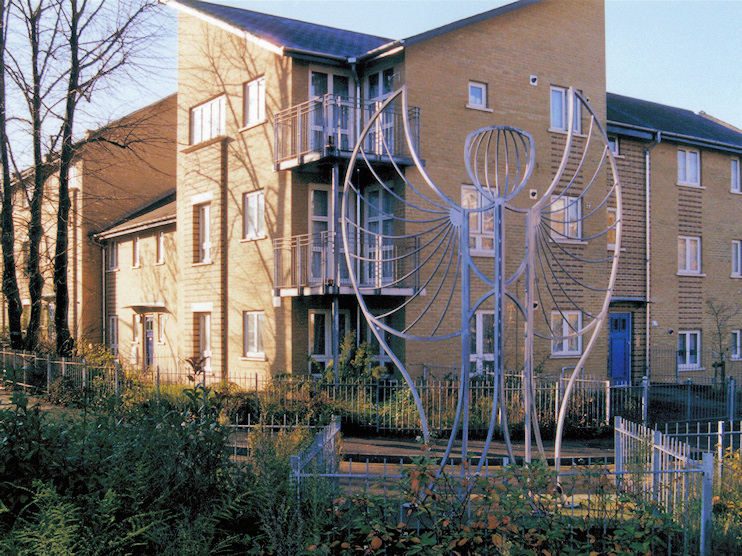Angell Town
Angell Town, Lambeth
A large, municipally built housing complex on the Brixton/Stockwell border

Angell Town takes its name from the eccentric landowner John Angell, who died in 1784. His grandfather, Justinian, had acquired the property by marriage. Angell Town was built up in the early 19th century as a desirable estate for the new middle classes.
The church of St John the Evangelist was built in 1852–3, designed by Benjamin Ferrey in the Perpendicular style.
Most of the old town was replaced in the 1970s by a council estate that combined 1960s-style blocks with the newer concept of overhead walkways and linking bridges, some of which were later removed in an attempt to prevent robbers and vandals making easy getaways. A bridge was supposed to cross Brixton Road to the social facilities on the Stockwell Park estate, but it was never built.
Angell Town soon gained a reputation for neglect and decline and became stigmatised as a sink estate. In a scheme notable for the high degree of residents’ participation in the consultative process, the estate was radically redeveloped from the mid-1990s.
The deck-access system was converted to a street format based on terraced homes with individual entrances and unused garages were replaced with shops and community facilities.
After a long period of neglect, a successful fundraising programme enabled St John’s church to be restored to full use as a place of worship in 2002. A neighbourhood nursery offering affordable childcare for under-fives has been created in the formerly derelict east end of the building. In addition to Angell Town itself, St John’s parish encompasses several other housing estates.
At St John’s Angell Town C of E primary school, pupils come from a wide range of minority ethnic backgrounds, with the largest group being of Black African heritage. About two-thirds of the pupils speak English as an additional language.
